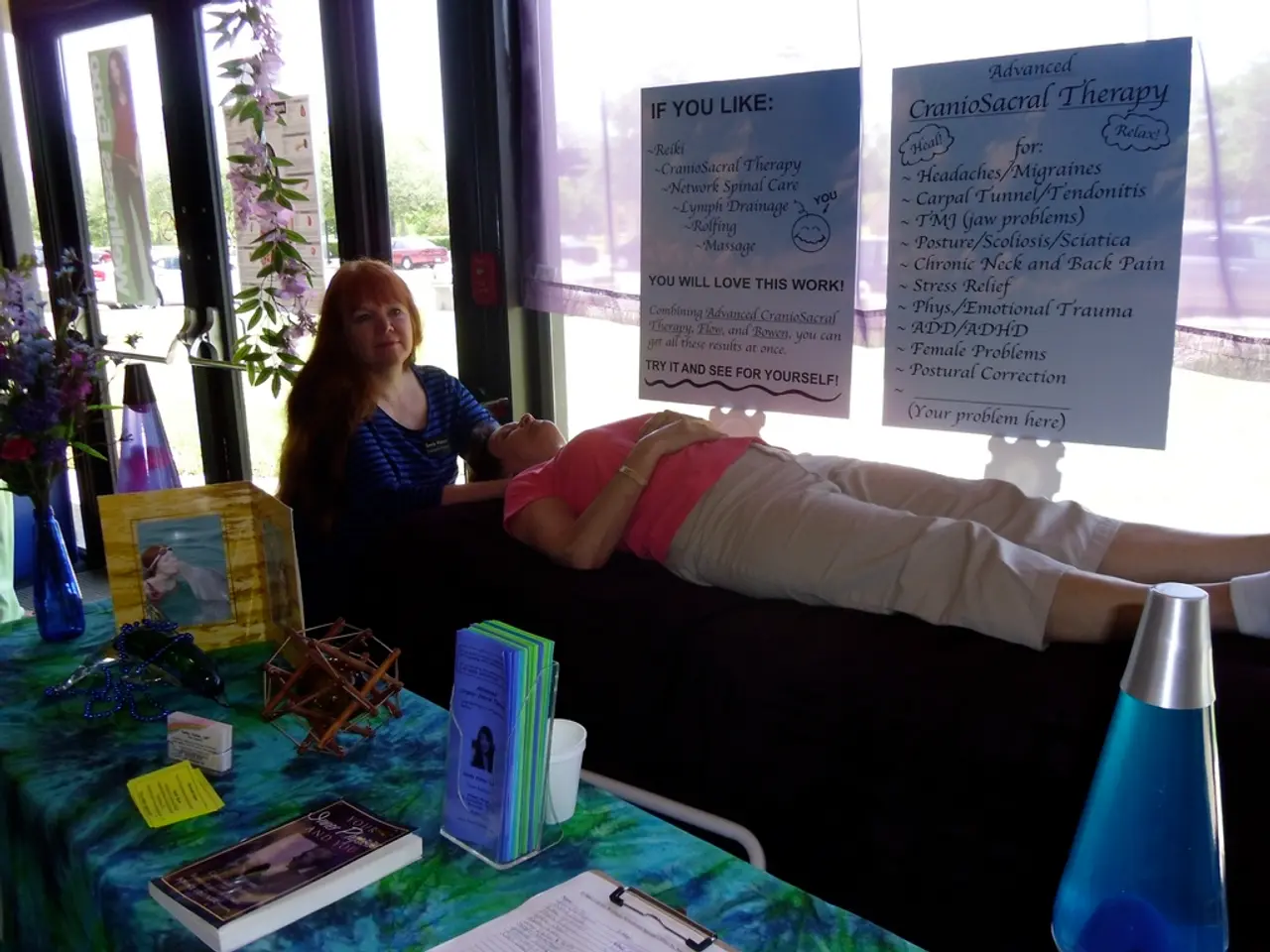Experiencing Pain in the Nerves: Understanding Neuropathic Pain
Peripheral neuropathic pain, a type of chronic pain originating from the nervous system, affects a significant number of individuals, particularly those with conditions such as cancer, diabetes, Parkinson's disease, multiple sclerosis, and stroke [1]. This pain can have a profound impact on an individual's everyday life, affecting physical abilities, emotions, and cognition, leading to functional limitations, anxiety, and depression [2].
In treating peripheral neuropathic pain, a tiered, multimodal approach is employed, combining pharmacological, interventional, and non-pharmacological therapies tailored to the patient's symptoms and response.
First-line treatments often include gabapentinoids, such as gabapentin and pregabalin, which modulate nerve excitability by targeting voltage-gated calcium channels [3]. Tricyclic antidepressants (TCAs) and serotonin-norepinephrine reuptake inhibitors (SNRIs) are also first-line agents due to their ability to modulate pain neurotransmission [1][2].
Topical agents like 5% lidocaine patches and 8% capsaicin creams can reduce localized pain sensations [3]. Opioid-like medications such as tramadol or tapentadol are considered but generally reserved for when first-line options are insufficient [1][2].
For refractory cases, second-line and advanced options may include NMDA receptor antagonists (e.g., ketamine), cannabinoids, and botulinum toxin type A injections [4]. Interventional procedures such as peripheral nerve blocks, sympathetic nerve blocks, and neuromodulation techniques like spinal cord stimulation and transcutaneous electrical nerve stimulation (TENS) are alternatives when medications fail [1][2][3].
Non-pharmacological and complementary therapies play a crucial role in managing peripheral neuropathic pain. Physical therapy and lifestyle modifications help maintain function and reduce symptoms [2][3][5]. Psychological therapies address the emotional impact of chronic pain, while acupuncture may provide pain relief with minimal side effects [2][3][5]. Nutritional supplements like alpha-lipoic acid and acetyl-L-carnitine have shown some benefit in neuropathic pain relief [2][3][5].
The diagnosis of neuropathic pain involves three stages: possible, probable, and definite, based on the certainty of the case. Questionnaires and skin biopsies are methods used in the diagnosis, but they are performed at later stages after initial examinations [1]. Neuropathic pain may be associated with symptoms such as allodynia (pain evoked by a normally non-painful stimulus), hyperalgesia (enhanced pain provoked by a normally painful stimulus), and paresthesia (a burning or prickling sensation) [1].
In conclusion, managing peripheral neuropathic pain requires individualized treatment, combining medications like gabapentinoids and antidepressants, topical agents, interventional nerve blocks, and supportive therapies such as physical and psychological care. Despite advances, effective relief remains challenging, highlighting the need for comprehensive, multimodal strategies tailored to patient needs [1][2].
References: 1. Peripheral nerve and sympathetic nerve blocks 2. Tiered pharmacologic approach including gabapentinoids, antidepressants, topical agents, opioids, and neuromodulation 3. Use of capsaicin, TENS, acupuncture, supplements 4. Role of physical therapy, newer therapies, and complementary approaches 5. Questionnaires and skin biopsies are methods used in the diagnosis of neuropathic pain, but they are performed at later stages after initial examinations.
- The make-up of a patient's health and wellness, including mental health, can be significantly impacted by chronic diseases like diabetes, cancer, and neurological disorders that may lead to peripheral neuropathic pain.
- Science continues to unravel the complexities of peripheral neuropathic pain, with a focus on medications like gabapentinoids, tricyclic antidepressants, and serotonin-norepinephrine reuptake inhibitors for first-line treatment.
- In addition to medical-conditions, mental-health issues and neurological disorders often associated with peripheral neuropathic pain, therapy options range from topical agents like lidocaine patches and capsaicin creams to interventional procedures like spinal cord stimulation and transcutaneous electrical nerve stimulation (TENS).
- Non-pharmacological therapies play a critical role in managing peripheral neuropathic pain, encompassing physical therapy, lifestyle modifications, psychological support, and complementary treatments such as acupuncture and nutritional supplements like alpha-lipoic acid and acetyl-L-carnitine.
- Diagnosis of peripheral neuropathic pain follows a three-stage process based on the likelihood of the condition, with questionnaires and skin biopsies used at later stages after initial examinations to confirm the presence of symptoms like allodynia, hyperalgesia, and paresthesia.




